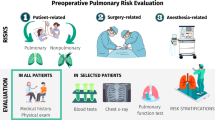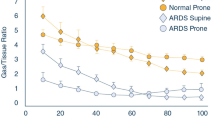Abstract
Background
Conventional supine emergence and prone extubation from general endotracheal anesthesia (GEA) are associated with extubation-related adverse events (ERAEs). Given the minimally invasive nature of endoscopic retrograde cholangiopancreatography (ERCP) as well as the improved ventilation/perfusion matching and easier airway opening in the prone position, we aimed to assess the safety of prone emergence and extubation in patients undergoing ERCP under GEA.
Methods
Totally, 242 eligible patients were recruited and randomized into the supine extubation group (n = 121; supine group) and the prone extubation group (n = 121; prone group). The primary endpoint was the incidence of ERAEs during emergence, including hemodynamic fluctuations, coughing, stridor, and hypoxemia requiring airway maneuvers. The secondary endpoints included the incidence of monitoring disconnections, extubation time, recovery time, room exit time, and post-procedure sore throat.
Results
The incidence of ERAEs was significantly lower in the prone group compared with the supine group (8.3% vs 34.7%, OR = 0.17, 95% CI 0.18–0.56; P < 0.001). Moreover, the prone group demonstrated no monitoring disconnections, shorter extubation time and room exit time, faster recovery, and, lower frequency and milder sore throat after the procedure.
Conclusions
For patients undergoing ERCP under GEA, compared with supine, prone emergence, and extubation had remarkably lower rates of EAREs and better recovery, and can maintain continuous monitoring and improve efficiency.
Graphical abstract



Similar content being viewed by others
References
Smith ZL, Das KK, Kushnir VM (2019) Anesthesia-administered sedation for endoscopic retrograde cholangiopancreatography: monitored anesthesia care or general endotracheal anesthesia? Curr Opin Anaesthesiol 32:531–537
Ferreira LE, Baron TH (2008) Comparison of safety and efficacy of ERCP performed with the patient in supine and prone positions. Gastrointest Endosc 67:1037–1043
Cavallone LF, Vannucci A (2013) Review article: extubation of the difficult airway and extubation failure. Anesth Analg 116:368–383
Kumar S, Sahni N, Bhagat H, Jain A, Wig J, Gandhi K, Chhabra R (2016) A randomized clinical trial of prone position extubation to reduce the severity of coughing in patients undergoing dorsolumbar spine surgery. Can J Anaesth 63:774–775
Olympio MA, Youngblood BL, James RL (2000) Emergence from anesthesia in the prone versus supine position in patients undergoing lumbar surgery. Anesthesiology 93:959–963
Yorukoglu D, Alanoglu Z, Dilek UB, Can OS, Kecik Y (2006) Comparison of different extubation techniques in lumbar surgery: prone extubation versus supine extubation with or without prior injection of intravenous lidocaine. J Neurosurg Anesthesiol 18:165–169
Ozden MG, Bakan N, Kocoglu H (2020) The effect of extubation in prone position on emergence and recovery in lumbar spinal surgery. J Neurosurg Sci 67(2):185–190
Goudra B, Singh PM (2014) ERCP: the unresolved question of endotracheal intubation. Dig Dis Sci 59:513–519
Edgcombe H, Carter K, Yarrow S (2008) Anaesthesia in the prone position. Br J Anaesth 100:165–183
Malafa MM, Coleman JE, Bowman RW, Rohrich RJ (2016) Perioperative corneal abrasion: updated guidelines for prevention and management. Plast Reconstr Surg 137:790e–798e
Aldrete JA, Kroulik D (1970) A postanesthetic recovery score. Anesth Analg 49:924–934
Aldrete JA (2007) Post-anesthetic recovery score. J Am Coll Surg 205:e3–e4 (author reply e4-5)
Tung A, Fergusson NA, Ng N, Hu V, Dormuth C, Griesdale DEG (2020) Medications to reduce emergence coughing after general anaesthesia with tracheal intubation: a systematic review and network meta-analysis. Br J Anaesth 124:480–495
Veder LL, Joosten KFM, Schlink K, Timmerman MK, Hoeve LJ, van der Schroeff MP, Pullens B (2020) Post-extubation stridor after prolonged intubation in the pediatric intensive care unit (PICU): a prospective observational cohort study. Eur Arch Otorhinolaryngol 277:1725–1731
Muderris T, Tezcan G, Sancak M, Gul F, Ugur G (2019) Oral flurbiprofen spray for postoperative sore throat and hoarseness: a prospective, randomized, double-blind, placebo-controlled study. Minerva Anestesiol 85:21–27
Smith ZL, Mullady DK, Lang GD, Das KK, Hovis RM, Patel RS, Hollander TG, Elsner J, Ifune C, Kushnir VM (2019) A randomized controlled trial evaluating general endotracheal anesthesia versus monitored anesthesia care and the incidence of sedation-related adverse events during ERCP in high-risk patients. Gastrointest Endosc 89:855–862
Sorser SA, Fan DS, Tommolino EE, Gamara RM, Cox K, Chortkoff B, Adler DG (2014) Complications of ERCP in patients undergoing general anesthesia versus MAC. Dig Dis Sci 59:696–697
Chui J, Craen RA (2016) An update on the prone position: continuing professional development. Can J Anaesth 63:737–767
Channabasappa SM, Shankarnarayana P (2013) A comparative study of hemodynamic changes between prone and supine emergence from anesthesia in lumbar disc surgery. Anesth Essays Res 7:173–177
Mase K, Noguchi T, Tagami M, Imura S, Tomita K, Monma M, Nozoe M, Takashima S, Kawakatsu K (2016) Compression of the lungs by the heart in supine, side-lying, semi-prone positions. J Phys Ther Sci 28:2470–2473
Perbtani YB, Summerlee RJ, Yang D, An Q, Suarez A, Williamson JB, Shrode CW, Gupte AR, Chauhan SS, Draganov PV, Forsmark CE, Chang M, Wagh MS (2016) Impact of endotracheal intubation on interventional endoscopy unit efficiency metrics at a Tertiary Academic Medical Center. Am J Gastroenterol 111:800–807
Rakotondrainibe A, Randriamizao H, At R, Rcn R, Raveloson N (2017) Sore throat after extubation: perioperative risk factors in recovery room among malagasy patients. J Med Res 3:229–233
Ozden MG, Bakan N, Kocoglu H (2023) The effect of extubation in prone position on emergence and recovery in lumbar spinal surgery. J Neurosurg Sci 67:185–190
Mashiana HS, Jayaraj M, Mohan BP, Ohning G, Adler DG (2018) Comparison of outcomes for supine vs. prone position ERCP: a systematic review and meta-analysis. Endosc Int Open 6:E1296–E1301
de Kam PJ, Nolte H, Good S, Yunan M, Williams-Herman DE, Burggraaf J, Kluft C, Adkinson NF, Cullen C, Skov PS, Levy JH, van den Dobbelsteen DJ, van Heumen E, van Meel FCM, Glassner D, Woo T, Min KC, Peeters PAM (2018) Sugammadex hypersensitivity and underlying mechanisms: a randomised study of healthy non-anaesthetised volunteers. Br J Anaesth 121:758–767
Herring WJ, Woo T, Assaid CA, Lupinacci RJ, Lemmens HJ, Blobner M, Khuenl-Brady KS (2017) Sugammadex efficacy for reversal of rocuronium- and vecuronium-induced neuromuscular blockade: a pooled analysis of 26 studies. J Clin Anesth 41:84–91
Acknowledgements
None.
Funding
This work was supported by the Research project of Shanghai Municipal Health Commission (201940062) and the National Natural Science Foundation of China (81774108 and 81973652).
Author information
Authors and Affiliations
Corresponding authors
Ethics declarations
Disclosures
Jin-hui Xiang, Pan Wei, Yu-jiao Zhang, Li-li Li, Xing Li, Jian Wang, Jian Xie, Yong Zhong, Hao Gao, Lan Yuan, Wen-ting Chen, and Jian-gang Song have no conflicts of interest or financial ties to disclose.
Additional information
Publisher's Note
Springer Nature remains neutral with regard to jurisdictional claims in published maps and institutional affiliations.
Rights and permissions
Springer Nature or its licensor (e.g. a society or other partner) holds exclusive rights to this article under a publishing agreement with the author(s) or other rightsholder(s); author self-archiving of the accepted manuscript version of this article is solely governed by the terms of such publishing agreement and applicable law.
About this article
Cite this article
Xiang, Jh., Wei, P., Zhang, Yj. et al. Safety of prone emergence from general endotracheal anesthesia in patients undergoing ERCP: a randomized controlled trial. Surg Endosc 37, 7493–7501 (2023). https://doi.org/10.1007/s00464-023-10187-7
Received:
Accepted:
Published:
Issue Date:
DOI: https://doi.org/10.1007/s00464-023-10187-7




